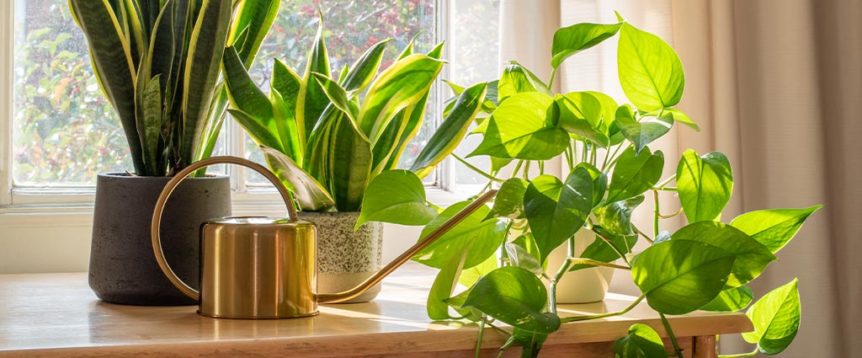One of the top lessons learned from the pandemic is the importance of indoor air quality—at work, home and play. Besides germs, bacteria and viruses that can get trapped inside, pollutants can also find their way into your home. This can contribute to (or worsen) asthma, allergies, respiratory issues and other health problems. According to the Environmental Protection Agency (EPA), Americans spend an average of 90 percent of their time indoors, where pollution can be two to five times greater than what you’d typically find outdoors. Yikes!
With that in mind, follow these 10 tips to improve your indoor air quality:
1. Open your windows. Improve indoor ventilation by opening windows when possible. This lets indoor toxins out and fresh air in. The caveat: If anyone in your home is allergic to outdoor irritants (like pollen), then keep windows closed on high-pollen days.
2. Don’t let people smoke indoors. We all know that smoking can cause cancer. But even being exposed to second-hand smoke can cause a variety of health problems. If anyone feels the need to smoke, do it outside.
3. Add plants to your home. According to a NASA Clean Air Study, some indoor plants act as natural air purifiers. How? They absorb carbon dioxide, release oxygen and may also remove some air pollutants. Try placing certain plants around your home, such as English ivy, heartleaf philodendron and peace lily.
4. Use HEPA filters in your central A/C unit. The EPA says HEPA air filters can remove 99.97% of tiny airborne particles such as bacteria, dust, dander, mold and allergens. Follow manufacturer’s instructions to change filters regularly, often every one to three months.
5. Take your shoes off. As soon as you enter your home, leave shoes by the door to limit tracking in dirt, pesticides, allergens and other pollutants.
6. Control moisture. Fix water leaks (which can cause mold and reduce air quality) and get a dehumidifier if needed.
7. Replace carpeting with tile or hardwood flooring. Soft surfaces harbor allergens like dust mites, so switching to a hard surface means less allergen buildup.
8. Dust and clean your home regularly. Choose mild, fragrance-free cleaners. Use a vacuum cleaner with a HEPA filter to pick up and trap dirt, pet dander and dust.
9. Wash and protect bedding. Launder your sheets, pillowcases and blankets weekly in hot water. Use allergen-proof pillow and mattress covers to cut down on dust mites, which can trigger allergies.
10. Keep pets off soft surfaces like beds and couches. Provide them with their own comfy sleeping place (such as dog bed or old blanket) that you can throw in the wash.

